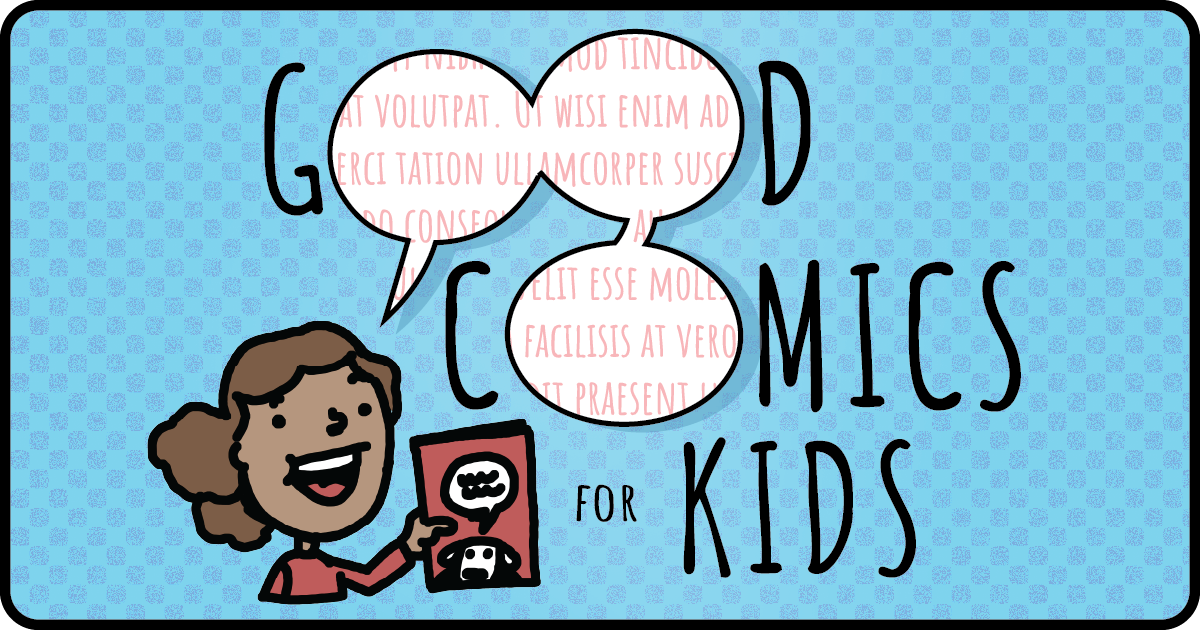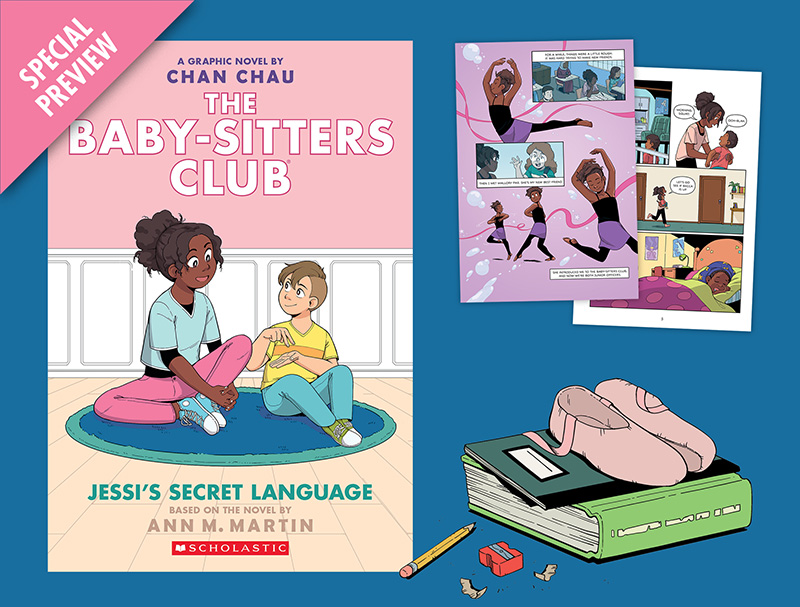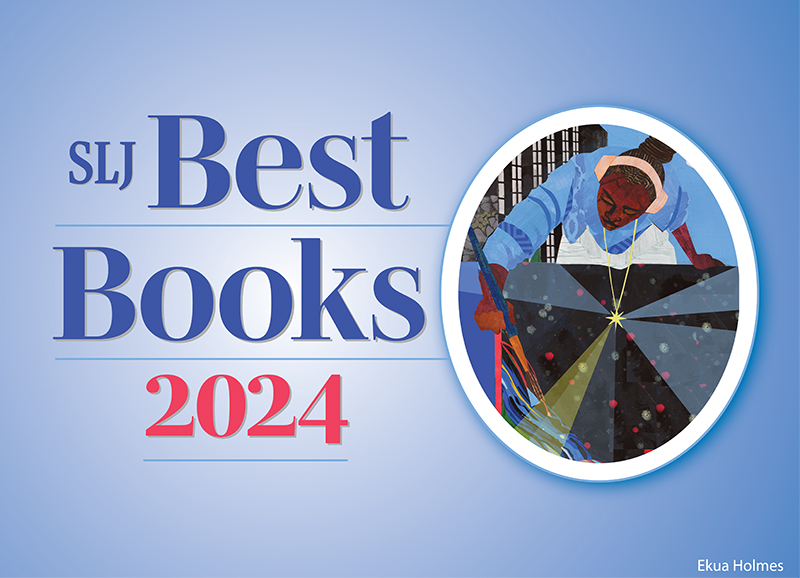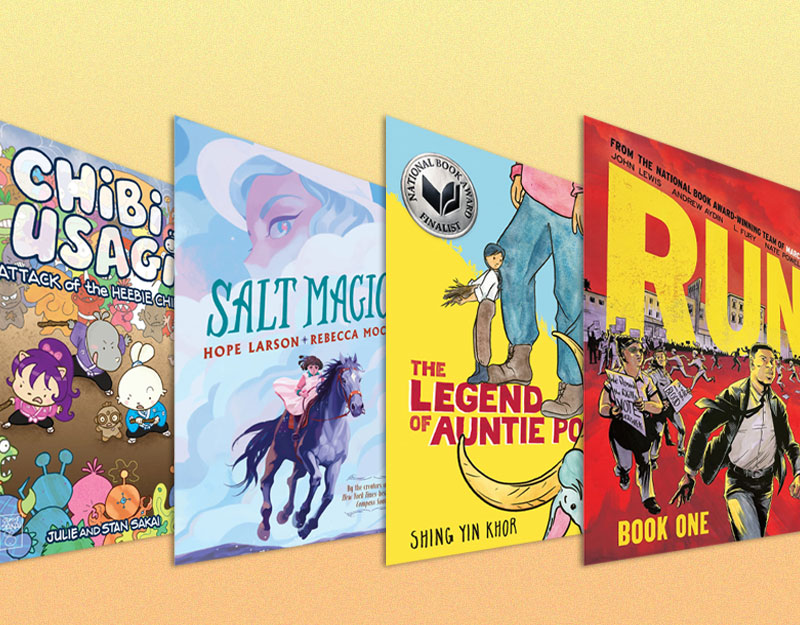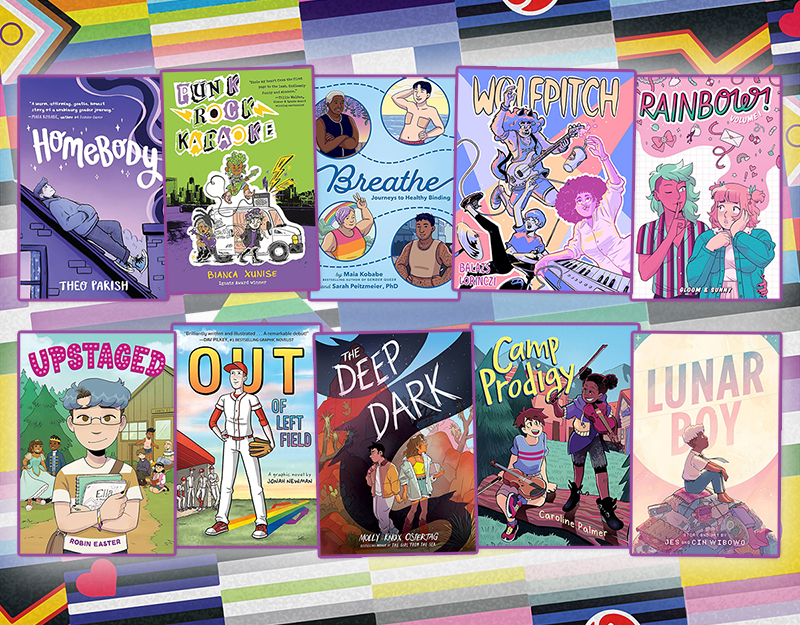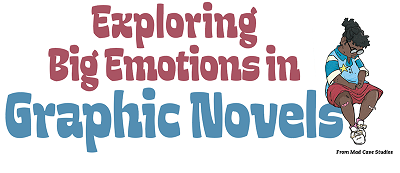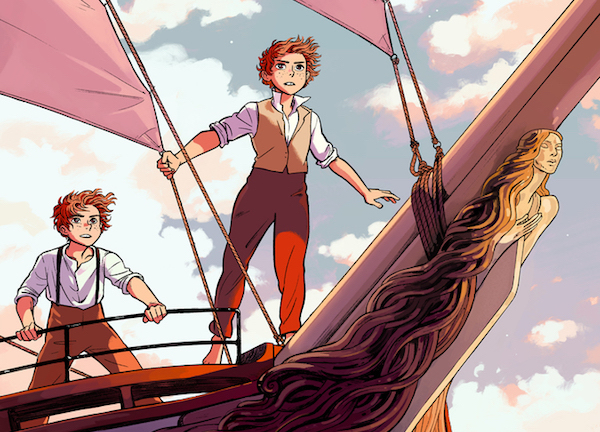
Interview: Hope Larson on ‘Knife’s Edge’
Writer Hope Larson and artist Rebecca Mock’s 19th century pirate adventure saga concludes this month with the release of Knife’s Edge, the sequel to their 2016 Compass South.
 That their story is a duology is appropriate, as their protagonists are also two in number: Twelve-year-old twins Cleopatra and Alexander Dodge. In the first book, the twins escaped a Dickensian life as thieves in a New York City kid gang to hatch an elaborate scam that involved taking on assumed identities, and ended up getting sidetracked by pirates in pursuit of a treasure they had a secret connection to.
That their story is a duology is appropriate, as their protagonists are also two in number: Twelve-year-old twins Cleopatra and Alexander Dodge. In the first book, the twins escaped a Dickensian life as thieves in a New York City kid gang to hatch an elaborate scam that involved taking on assumed identities, and ended up getting sidetracked by pirates in pursuit of a treasure they had a secret connection to.
In Knife’s Edge, they are pursuing that treasure for themselves, as well as their disparate plans for their futures, with the most feared pirate of the era following in their wake.
ADVERTISEMENT
ADVERTISEMENT
Writer Larson is perhaps best known as the cartoonist responsible for the 2012 adaptation of A Wrinkle In Time, but she is a prolific comics writer, creating original graphic novels like these as well as working for DC Comics on their monthly Batgirl comic. With The Dodge twins’ adventures coming to an end, we took the opportunity to discuss the crafting of those adventures with Larson.
 Like a lot of readers, I first became aware of your work through Salamander Dream and Gray Horses, both of which you had written and drawn, and I imagine many librarians know you best for your A Wrinkle In Time adaptation. Can you tell us a little bit about how you perceive the difference between the sort of cartooning you were doing on works like those versus writing for another artist, as you’re doing in Knife’s Edge?
Like a lot of readers, I first became aware of your work through Salamander Dream and Gray Horses, both of which you had written and drawn, and I imagine many librarians know you best for your A Wrinkle In Time adaptation. Can you tell us a little bit about how you perceive the difference between the sort of cartooning you were doing on works like those versus writing for another artist, as you’re doing in Knife’s Edge?
I’ve always written scripts for my comics, as opposed to many other cartoonists who draw out rough versions of their books, so in that respect my process hasn’t changed dramatically from those first books. The biggest difference is that in working in a team—writer plus artist, or writer plus artist plus colorist plus letterer—there’s a lot more collaboration.
Artists aren’t just machines who draw what I tell them to; they come in with their own ideas about who the characters are, what the settings should look like, and different ways of laying out a page. It’s very important for me to leave room for them to bring their own magic to the process, because that’s where you can go from a good book to a great book. Of course, a bad artist can also drag a book down, so it’s important to choose collaborators wisely! Fortunately, I’ve been pretty lucky.
How did you and Rebecca Mock come together for this project?
We were connected by a friend on Twitter! I was looking for an artist who was strong on character design and acting as well as a skilled set designer. Compass South and Knife’s Edge lean heavily on their locations, and it takes a special artist to bring that across.
I was wondering if you could talk to us a little bit about your influences and inspirations for this series. One aspect of it I found fascinating was the way in which the story felt familiar without feeling derivative; that is, while reading it felt to me like it belonged to a certain tradition of old-time adventure stories for young readers but not like a pastiche of particular stories.
Thank you; that’s a huge compliment. It was inspired by the first comics I loved, Astérix and Tintin. I’ve always wanted to do a bande dessinée-style adventure comic like that, but it’s a risky proposition in the U.S., so I had to pay some dues as an author before I was able to successfully pitch it. Other influences include newer books like Miss Don’t Touch Me and Isaac the Pirate, which are not for kids, but are both historical and have their roots in those same European adventure comics I love. To flesh out the stories I did a lot of research, particularly seeking out travelogues written during the 1800s, and looking for details I could steal.
What drew you to this particular time period, and did it present particular challenges to you as a writer? Were these settings you were already fairly familiar or comfortable with, or did you find yourself having to do quite a bit of that research you just mentioned?
Like I mentioned, lots of research. But I do a lot of research no matter what I’m writing. For me, anything worth writing involves traveling into a world that’s unfamiliar, or learning about a subject I’m not entirely familiar with. It’s not just that I like a challenge, but that my own life experience isn’t broad enough to encompass all the stories I want to tell, and I think that’s true of most writers. The writing life doesn’t usually mesh well with galavanting around the world–at least, not if you’re beholden to deadlines, which I am.
As for the time period, I keep coming back to the late 1850s/early 1860s. It’s an interesting time period–westward expansion, the aftermath of the industrial revolution…
For me, that’s as far back as I can go and still find America relatable.
Both volumes read as fairly distinct, complete, and satisfying stories of their own, although obviously Knife’s Edge follows the events of Compass South closely, and the endings of each are fairly parallel. What was plotting the series like, then? It seems so structured that I assume you knew exactly where things would end up, or at least you had a pretty good idea of it, before you were scripting the first volume.
I did outline both books before writing them, although of course they changed a lot in the writing. The two books are intended to go together, but you could read just one of them and have a fairly satisfying experience. At the same time, I could probably keep writing about these characters forever and not run out of stories to tell, because the cast is large and there’s always another adventure around the corner.
One interesting aspect is how villains from Compass South gain a bit more depth and become “good guys,” or at least in a few cases much more sympathetic bad guys, in Knife’s Edge. Did you find yourself coming to like these characters the more time you spent with them, or did you always envision a less black-and-white depiction of morality than might be expected in a story filled with criminals and pirates?
I’m not that interested in black-and-white morality, although I’ve definitely come to believe in it more during the past few months. I like to believe that most people are a shade of gray, and proceed through life with intention. Flawed heroes and sympathetic villains are more fun to write, and people who take an active role in their own lives are more fun to write, so that’s what I shoot for.
Are there particular scenes or plot points in this book that you are particularly eager to see readers react to? I don’t want to spoil anything here, of course, but there are certainly some big moments that were built up across both books in this volume.
I have some favorites, but they’re all spoilers! I will say that I love the final scene of the book, after the, ah, climactic incident, and it turned out exactly the way I hoped it would. Rebecca is brilliant.
You’ve also been writing DC’s Batgirl comic for a while now. How different is it writing a book like that, which comes out regularly in 20-page chunks, versus a series of graphic novels? And how different is it working on a book with so many more collaborators and stakeholders, than on Knife’s Edge and Compass South, which seem to be just you and Rebecca?
It’s a completely different experience writing Batgirl than it is working on a book with Rebecca. I absolutely love writing Batgirl and working with DC, and I get a lot out of it, creatively. That said, I’m a contractor on that book, and I answer to a lot of bosses. We’re making a product for a specific audience. I’m sure lots of folks will read that sentence and shudder, but it’s made me a better writer. I don’t know if it’s working outside my wheelhouse a bit, or writing very structured books, or producing a much greater volume of writing, but I’m a more confident writer than I was a couple years ago. More confident, flexible, and skilled. And I’m still learning something new with every issue.
The books I do with Rebecca or on my own are precious to me; she and our editor and I are making our book, and all it has to be is the best version of the thing we set out to make. It doesn’t need x number of pages of fighting, or whatever. It doesn’t need to fit into any mythology but our own. That freedom is wonderful, but it’s also a little scary because there is no map, and it’s up to us to decide where we’re going.
ADVERTISEMENT
ADVERTISEMENT
What was it like stepping following Cameron Stewart and Brenden Fletcher on Batgirl, given what a big deal their run with Babs Tarr and other was, sort of reinventing the character; did you feel a lot of pressure?
I didn’t, really. I loved their run, and they’re all lovely people, so that helped. I felt like I had their blessings. I knew going in that plenty of people wouldn’t care for my version of Batgirl, and others would love it and both of those things are fine. I can only write the way I write. I felt more pressure working on A Wrinkle in Time, because there was a lot of vitriol when that book was announced. There may have been frustration when I was announced on Batgirl, but I dont go looking for criticism, so most of it passed me by.
Finally, do you think fans of Batgirl would like Knife’s Edge and Compass South, and vice versa? They seem to have a few things in common, beyond the name of the writer and the red-haired protagonists…
I think so. There are definitely similarities. The funny thing is that my first arc on Batgirl involves travel, and that was an idea my editors pitched to me, not the other way around. Traveling redheads: that’s my genre! A lot of superhero comic readers seem heisitant about books like Compass South, but there’s enough action and drama that I think they’d probably dig it if they gave it a shot.
Filed under: Graphic Novels, Interviews
About J. Caleb Mozzocco
J. Caleb Mozzocco has written about comics for online and print venues for a rather long time now. He lives in northeast Ohio, where he works as a circulation clerk at a public library by day.
ADVERTISEMENT
ADVERTISEMENT
SLJ Blog Network
One Star Review, Guess Who? (#211)
Cover Reveal and Q&A: Dusti Bowling’s Latest – The Beat I Drum (Apr 2025)
Notable NON-Newbery Winners: Waiting for Gold?
The Seven Bills That Will Safeguard the Future of School Librarianship
Take Five: Newbery Picks, Part Two
Gayle Forman Visits The Yarn!
ADVERTISEMENT

